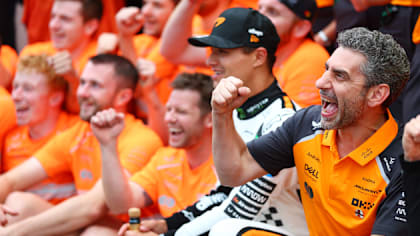
Feature
How Verstappen solved the tyre puzzle to win in Saudi Arabia

Share

Max Verstappen won a thrilling fight with Charles Leclerc for victory in the Saudi Arabian Grand Prix. The timing of a Safety Car cruelly lost pole-sitter and early leader Sergio Perez a real chance of victory. The timing of a later VSC lost Leclerc his ability to keep Verstappen out of DRS reach. Verstappen used each of these opportunities to progress, eventually triumphing after a great series of passes and repasses between the Ferrari and Red Bull.
But each of these crucial phases was determined by tyre behaviour.
Pace management on mediums
Almost everyone began the race on the medium C3 tyre. It was not as good as the hard C2 over a stint – the hard would be the quicker tyre after about six laps - but its initial performance was better. The soft C4 was too soft for the race and no one used it. A medium-hard combination would make the faster one-stop strategy possible.
So that’s how it was as Perez’s Red Bull led away from pole, with Leclerc, Verstappen and Carlos Sainz’s Ferrari close in his wake. No one wanted to push too hard on this tyre, as keeping it in shape around the pit stops was going to be essential. No one at the front, anyway. The dicing Alpine drivers Esteban Ocon and Fernando Alonso went hard at it immediately. But Perez couldn’t push hard enough to ensure he was out of Leclerc’s undercut range.
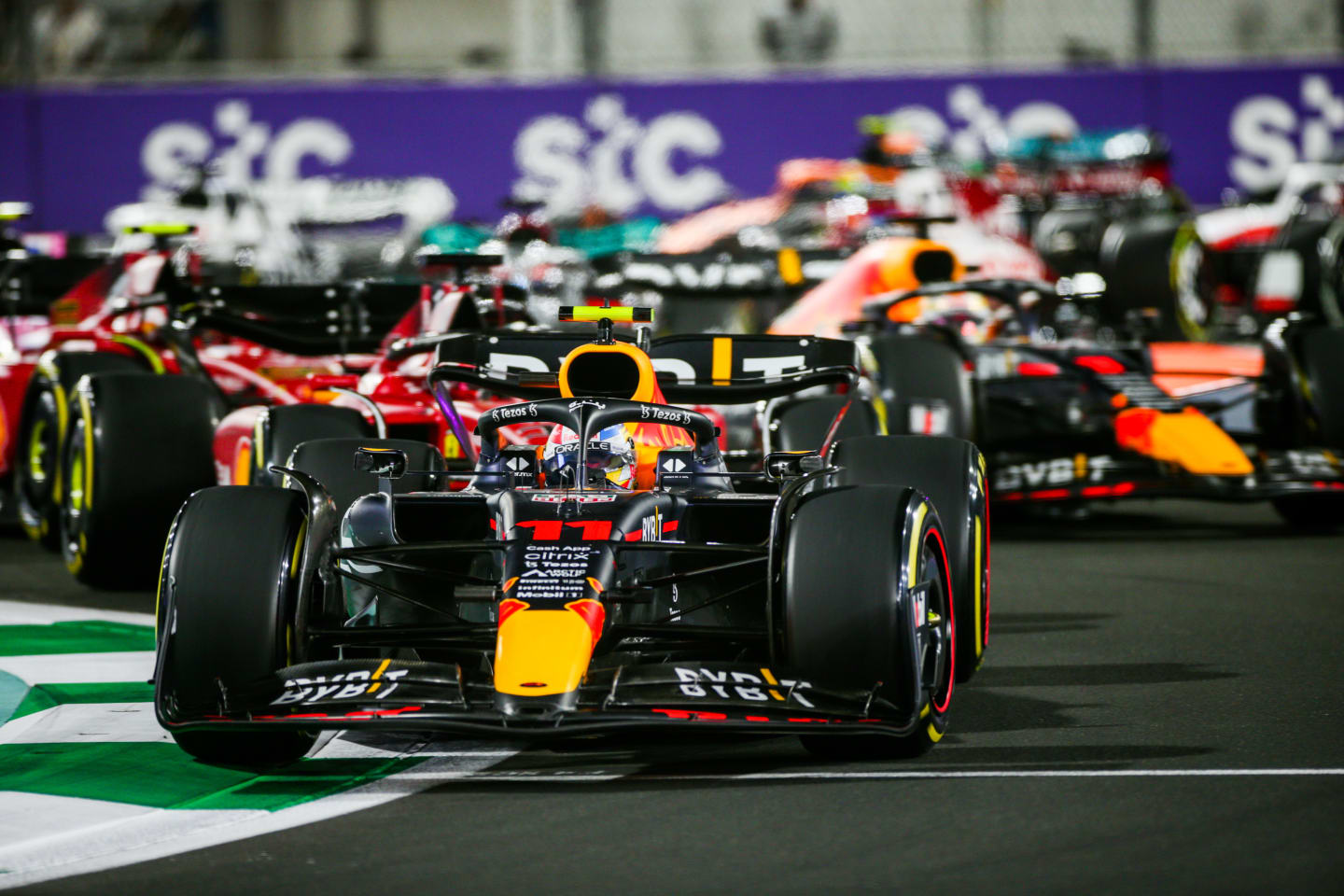
Perez was able to control the early part of the race
As the gap stretched to the midfield behind and the pit stop window opened, Ferrari was looking at applying undercut pressure to Perez, who was only 2.2s clear of Leclerc by the 15th lap as they gained a pit stop’s worth of a gap over the fifth place Mercedes of George Russell. Leclerc was closing as Perez’s tyres were beginning to suffer.
Leclerc was told this was the lap at which the stop would be happening – either Perez’s or his. He knew he’d be doing the opposite of whatever Perez did at the pit entry. Red Bull brought Perez in, Leclerc stayed out.
We never got to find out how this battle would have panned out because Nicholas Latifi’s accident immediately after Perez pitted brought out the Safety Car, enabling everyone to stop the next lap at much less of a cost. Hence Leclerc, Verstappen and Sainz bumped the unfortunate Perez down to fourth.
MUST-SEE: The Alpine drivers enjoy heart-in-mouth battle in Jeddah
Flat-out on hards
With everyone up front now on the hard tyre, a very different style of racing ensued. This tyre allowed drivers to push flat-out without it overheating. Just as Perez’s task in the first stint had been very well defined, so was Leclerc’s now: he badly needed to get out of DRS reach of Verstappen in the first two laps of the restart. He was able to do this, crossing the finish line 1.057s ahead, as the DRS feature was enabled.
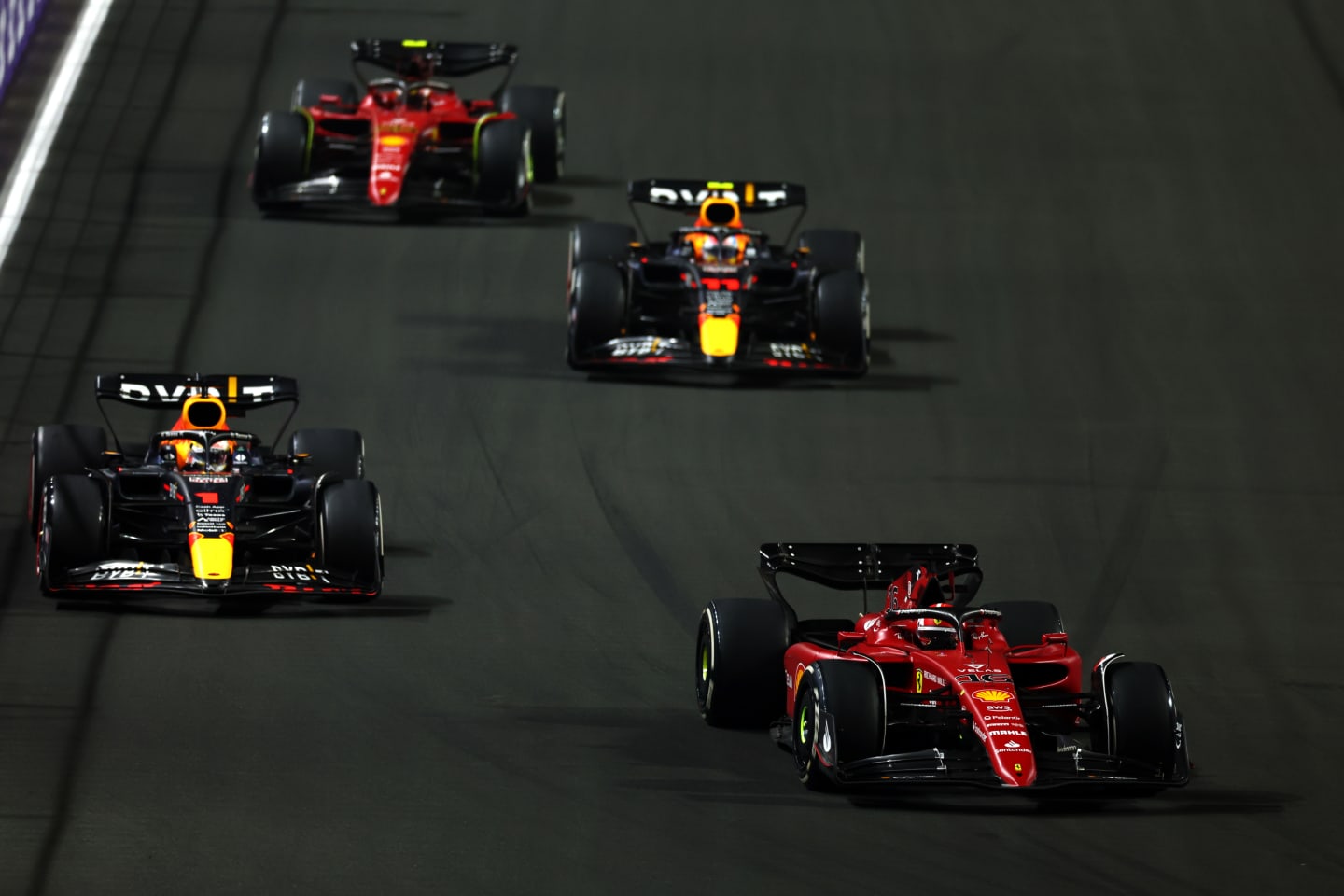
Leclerc had the measure of Verstappen whilst his hard tyres were still new
Leclerc and Verstappen proceeded to race flat-out, the former desperately trying to prevent the latter getting within less than 1s at any one of the three DRS detection lines. They exchanged new fastest laps but it appeared as if Leclerc had the win covered. It was a wonderful display from both drivers as they enjoyed their own private duel, even if it looked like the Ferrari was in control.
While the medium tyre of the first stint had defined a careful, measured style of racing at the front, the hard tyre of the second stint enabled an old-school on-the-limit attack.
FACTS AND STATS: Zero to hero for Red Bull, and a rare achievement for Hamilton
Faster tyre warm-up for Red Bull
A VSC for the slowing cars of Alonso and Daniel Ricciardo changed the complexion of the race yet again. And tyre traits were at the centre of it.
Three laps at VSC speeds – around half-a-minute off the pace – cooled the tyres. Worn, hard-compound tyres can be very reluctant to come back up to temperature once they have cooled. There’s not enough movement from the thin tread to initiate the excitation of the molecules and without much tread grip the core of the tyre cools as it’s no longer being fed with as much load.
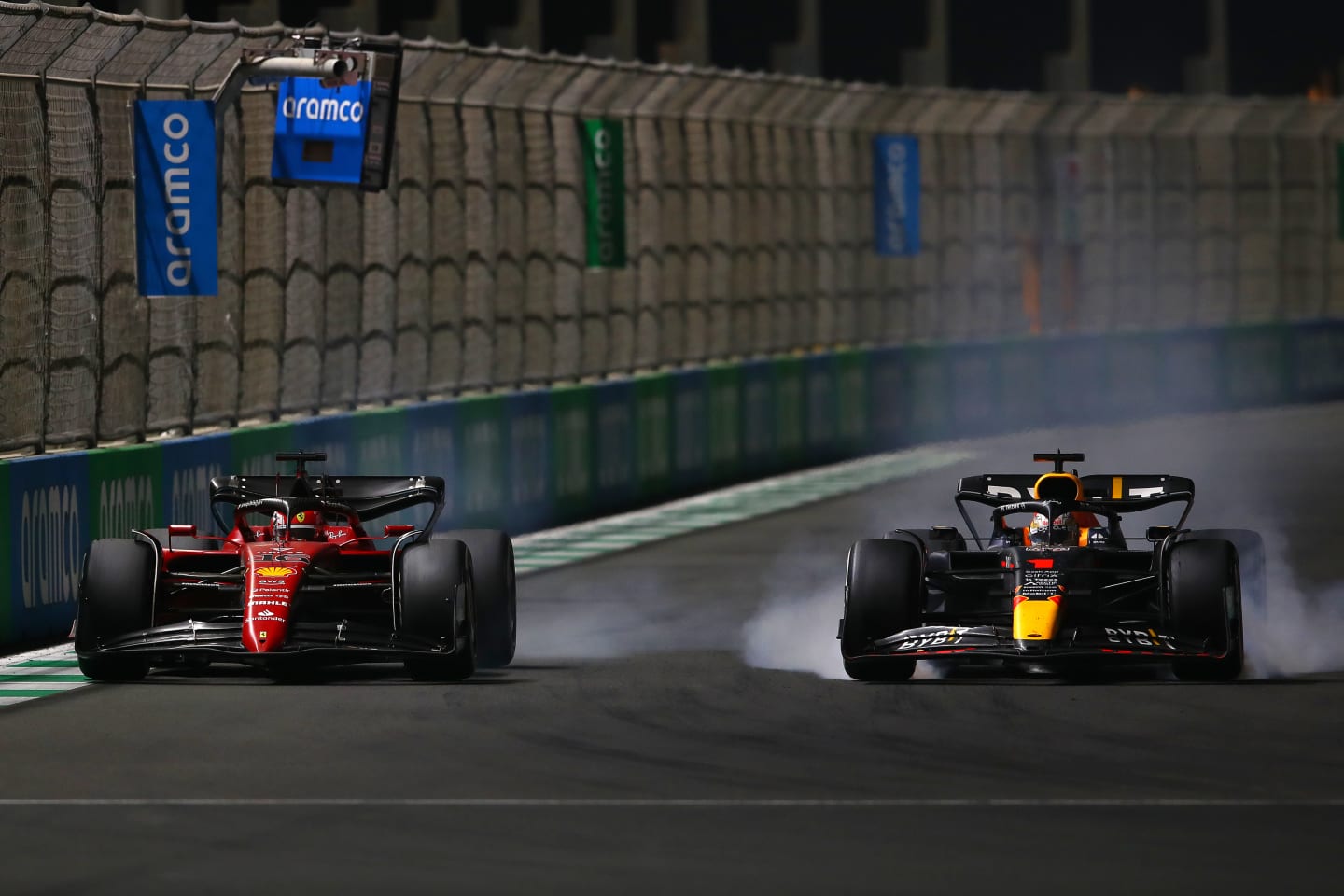
On older tyres, the Red Bull man was able to close the gap and exploit the use of DRS
But the Red Bull could switch them on better than the Ferrari. This was noted by all four Red Bull and Ferrari drivers. The Red Bull had the tyres up to temperature within a few corners, the Ferrari took most of the lap. Which of course meant that Leclerc could no longer keep Verstappen out of that DRS zone.
As Verstappen eventually worked out the optimum way of using the DRS to pass without leaving himself open to counter-attack, so Leclerc’s rears were beginning to lose performance, after their many laps of punishment.
That’s how the win was decided in the end.
YOU MIGHT ALSO LIKE
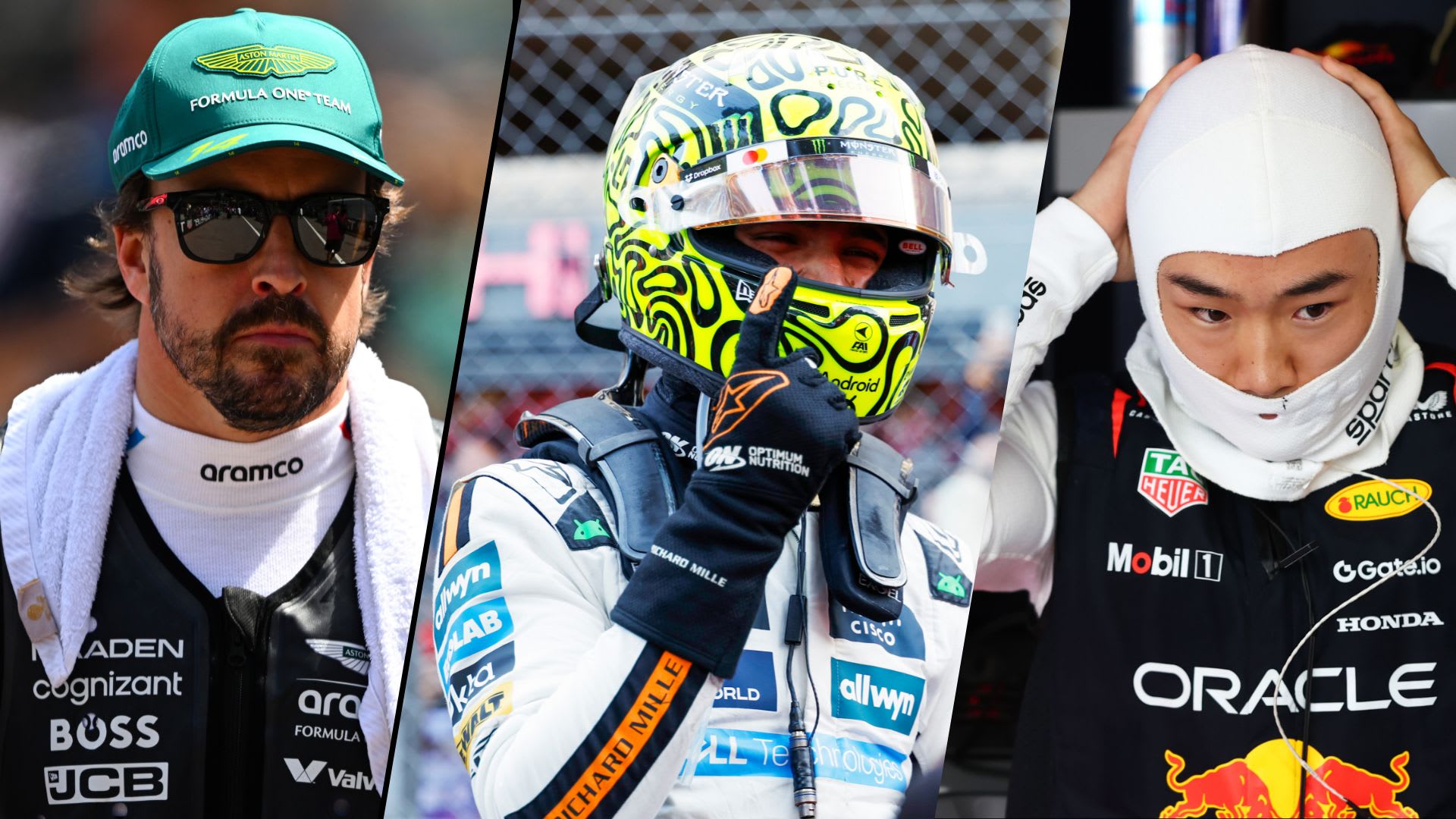
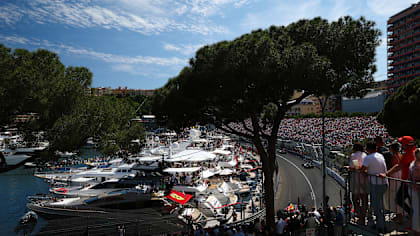
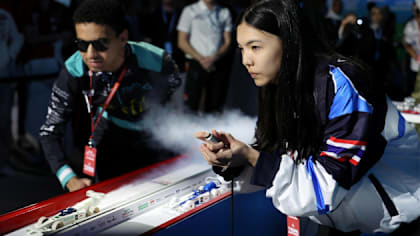
)
